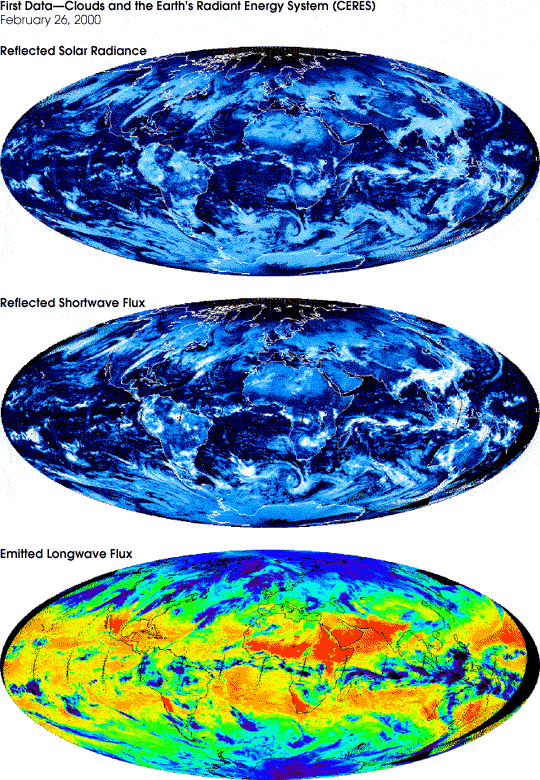


The two CERES instruments on Terra successfully opened their contamination cover doors on Friday, February 25. A few hours later, they began to scan the Earth, making measurements of the reflected solar flux and emitted terrestrial flux that make up the Earth’s radiation budget. Both instruments appear to be working very well. In normal operation one instrument will scan perpendicular to the Terra ground track, in order to spatially sample the Earth. The other instrument samples the angular distribution of radiation. These two Terra instruments join a previous CERES scanner on the Tropical Rainfall Measuring Mission (TRMM), which was launched on November 27, 1997. They complement TRMM by extending the observations to cover the globe and by improving sampling of the large diurnal cycle of radiation.
The first image shows reflected solar radiance emerging from the top of the atmosphere, as measured by the CERES Flight Model 1 (FM1) instrument on the Terra spacecraft. These preliminary (unvalidated) data show twenty four hours of measurements covering the entire Earth from North Pole to South Pole.
The second image shows the reflected solar flux emerging from the top of the atmosphere. The data are taken from an entire day of observations from the CERES Flight Model 1 (FM1) instrument on the Terra spacecraft. The quantity plotted is "reflected solar flux", which not only involves instrument calibration and geolocation, but also removes the angular dependence of the upwelling radiance field. Thus, these data are Level 2 data, which means that CERES has been able to get a reasonable "engineering" calculation of derived physical fields within a few days of opening its covers. The third image shows the energy being lost from the Earth and the atmosphere by thermal emission. This process, familiar to most of us as the heat radiated by electric stove elements, involves light with wavelengths invisible to the eye.For more information regarding these images, see the Terra Web Site
Images courtesy of the CERES instrument team